Review by Lutz Bendlin
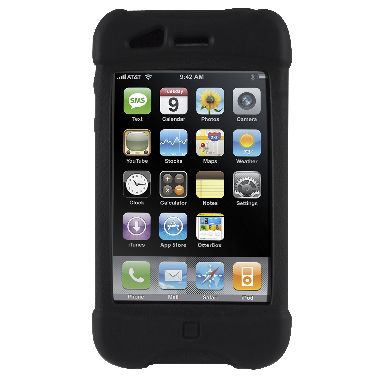 This is a continuation of our series on the iPhone 3G, especially with respect to using it for navigation (even though St. Steve has decided to seriously cripple the iPhone in this area by not allowing any real street navigation software). This is a continuation of our series on the iPhone 3G, especially with respect to using it for navigation (even though St. Steve has decided to seriously cripple the iPhone in this area by not allowing any real street navigation software).
The iPhone is designed beautifully, but it looks like this design was aimed squarely at a life in a velvet cushioned purse. From an outdoors perspective the iPhone is rather disappointing. It is definitely not waterproof (although there seem to be many encounters, especially of the yucky type "phone, meet toilet bowl" - most probably due to the slippery device surface), and it will chip and scratch very easily when put in a pocket with any non-velvety items like keys or change.
Otterbox, on the other hand, are all about the big outdoors. They have provided protective cases and waterproof cases for just about every electronic device worth using outdoors. Some of the cases are generic while others are tailored to a particular device.
Darren has recently reviewed the Defender case. The present review looks at the Impact series protective skin for the iPhone 3G. The name of this case brought a smile to this writer's face, in anticipation of all the crazy things you could do with the combination of the device and the skin. And the assistant testers (aka kids) were just too happy to take Otterbox up for the challenge. Let's see how the iPhone survived.
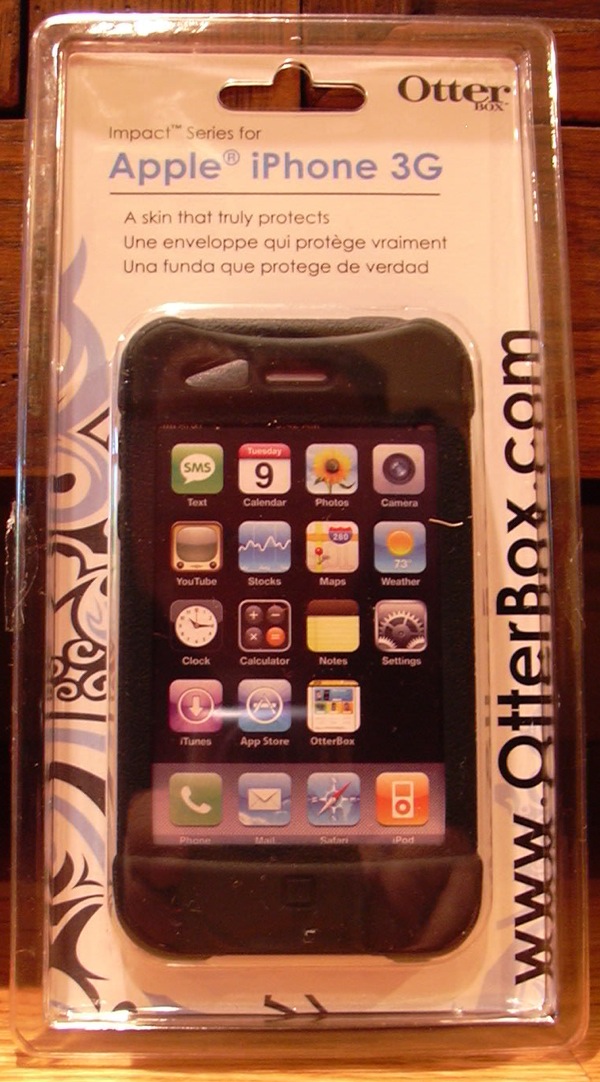
The protective skin comes in a rather bland blister pack. At the time only a black version was available but now you can order the skin either in black or white.
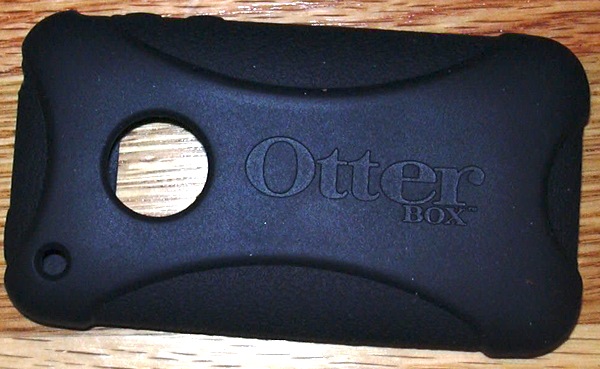
Here it is in all its backside glory. The big round hole has no function other than to let the Apple logo shine through. Was this a concession to Apple? It felt rather odd to me. Anyhow, let's move on. In the lower left is the hole for the camera. On the top rim you can see the two dimples for the volume control rocker and the hole for the mute switch. On the left side is the dimple for the power button, and the hole for the headphone jack. On the right is the hole for the dock connector and the speaker/microphone grills.
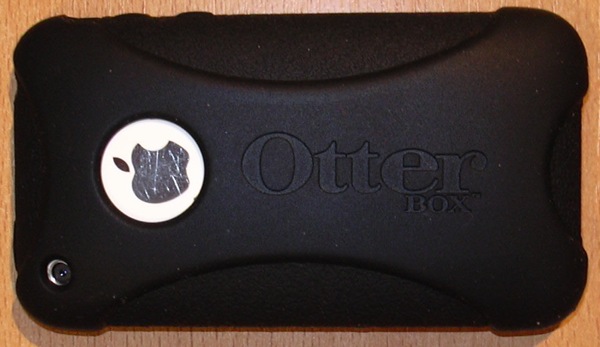
All four corners and most of the back have extra padding, while the sides and tops only have a very thin skin, so to speak. The inside of the corner areas features a type of honeycomb structure. I guess this is where the "Impact" name came from, as this structure clearly helps to absorb the impact energy when you let the device drop and it lands on any of the corners (by the way, corner drops are by far the most dangerous for any electronic device).
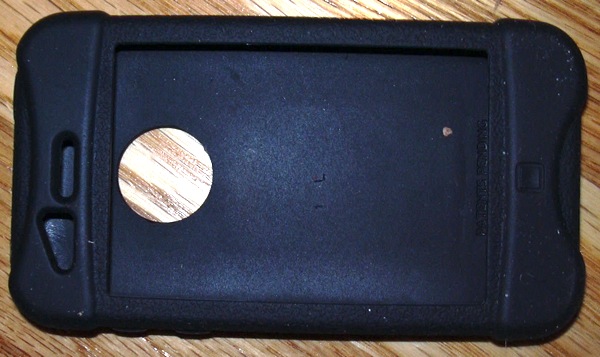
On the front you can see the opening for the display (yes, I know, it is hard to miss), the hole for the phone speaker, and the dimple for the Home button. Next to the speaker hole is this odd triangle that initially seems to be a bit out of place. But as any fanboi will be happy to tell you - this is the place where the iPhone has the sensors for ambient light and proximity. I am pretty sure that initial prototypes of the skin didn't have this opening, and the folks at Otterbox were wondering why their iPhones were behaving oddly. The triangle looks a bit odd (oh, looks like I am repeating myself) but it does seem to help.
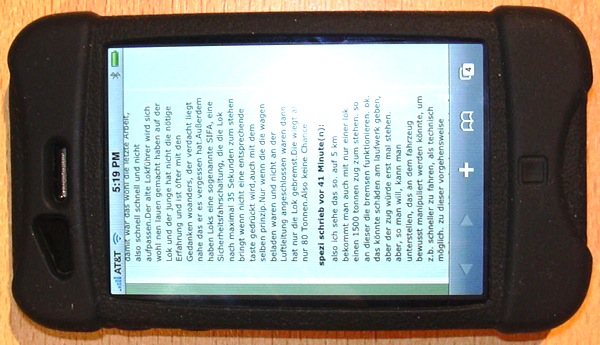
Fitting the iPhone into the skin is a snap. I mean, it is very easy. The skin is flexible and bendy, and if you have ever fitted a cover over a cushion you are certified for fitting the skin over the iPhone.
One problem with the large display opening is that frequent re-fitting of the skin seems to wear out the edge , and the sides are "standing up" quite a bit. This seems to be a deliberate design decision as the main purpose of the skin is to protect the iPhone from impact, rather than to protect it from dust or water.
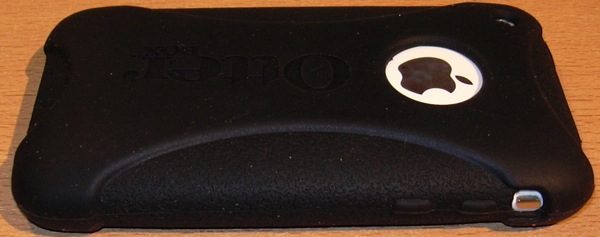
Wherever functionally possible, buttons are covered by the skin, and the button location is emphasized with dimples. Shown here is the volume up/down rocker, or rather its representation by the skin. The mute switch, however, cannot be handled in that way, and thus is accessible through a hole in the skin.

Rather than using individual holes for the dock connector and the speaker/microphone grills Otterbox decided to cut one big hole across the underside. Certainly works for me.
This shot also illustrates one of the inherent drawbacks of this skin (and any other skin for that matter) - as soon as you use the skin you can't use a tight fitting car holder any more. There seem to be some car holders that can handle devices with and without protective skins, but I haven't seen those in action yet, and hence cannot comment on their effectiveness.
In daily use the skin offered ample protection against deliberate and accidental drops, and improved the cohabitation chances of the iPhone with other items in the pocket (namely keys and coins). It also helped to get a (much) better grip on the iPhone, without adding too much bulk.
And the skin even gave some moderate protection against benign fluids like the occasional dinner table orange juice spill.
|